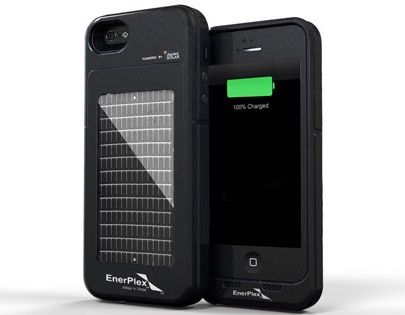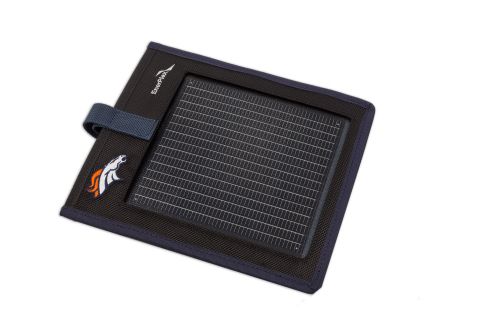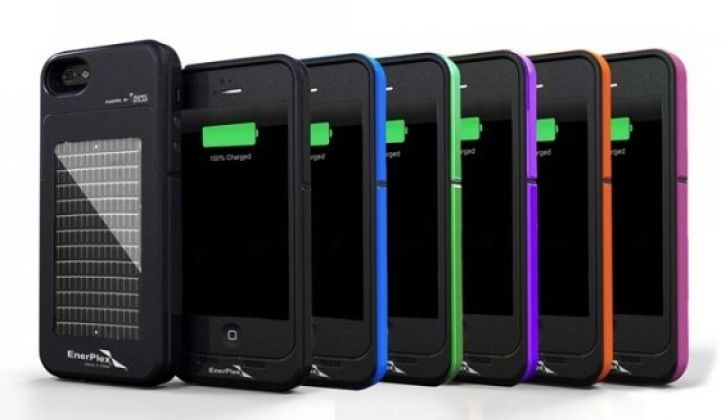Ascent Solar, the CIGS thin-film solar manufacturer that turned to the consumer gadget market to survive, raised another $6 million from Ironridge Technology, as reported in Bloomberg, with the first $3 million tranched in April and the remainder in May. (Here's the SEC Form D.)
When we last reported on Ascent, the publicly held consumer solar products firm had raised $10 million from the same investment firm, an "institutional investor in micro-cap public companies" and a division of Ironridge Global Partners.
Brendan O'Neil, a managing director at Ironridge, said the cash was to be used for "building inventory" and "new distribution channels." He added that it is "a tough market," but one that is as yet "untapped," with the "challenge of getting the product in the right distribution channel."
An investor colleague suggests that any additional cash into the firm would have to be "on a very tight leash with monthly milestones and lots of attention -- at least until the sales trajectory is clear."
In early 2011, the distressed CIGS solar panel manufacturer shifted its strategy from solar rooftops and building-integrated PV to solar device chargers for consumer, off-grid, and military applications. Ascent suggested higher margins were possible in those fields compared to ground-mount applications or BIPV markets. This shift came after years of unsuccessful attempts to succeed in the BIPV space. In August 2011, Ascent found a savior in Asian conglomerate TFG Radiant.
Ascent is attempting to make a market pivot, and its investors are hoping to turn around the CIGS thin-film solar company in a race against time.
The company has its work cut out for it. According to the firm's most recent quarterly report:
- Ascent lost $11,690,224 on $672,082 in sales in Q1
- The company has lost $259,532,271 since its founding in 2005
- As of March 31, 2014, Ascent had $1.6 million in cash on hand
- During the first quarter of 2014, Ascent used $6.5 million in cash for operations
- "Cash liquidity sufficient for the year ending December 31, 2014 will require additional financing."
- "Ascent is not in compliance with the Nasdaq minimum $1.00 bid price requirement" and "will transfer its listing from the Nasdaq Global Market tier to the Nasdaq Capital Market."
Ascent Solar’s shares are trading at 40 cents and the company has a market capitalization of $40 million.
Can Ascent Solar, once a rooftop solar aspirant, become a consumer-facing solar gadget sales company? Can a technology company change its corporate DNA and become a sales and marketing firm? Can Ascent's line of CIGS-based solar device- and battery-chargers turn the moribund concern into a thriving public company?
In a presentation from earlier this year, Amit Kumar, Ascent's chairman, described the company's strategy this way: "We are targeting premium markets with high-margin products." He also said that price-per-watt is no longer the most useful metric to use in discussing the company; price-per-unit provides more relevant information. To illustrate this point, Kumar noted that there is one-third of a watt of solar in the phone charger and it sells for $79 or $89 -- "That's more than $100 per watt." He continued, "We don't want to touch any product unless we're getting $20 per watt." (But again, if solar is such a small piece of the device BOM, it's unclear why the company would even bother continuing to own its uneconomical 30-megawatt CIGS factory.)
"We're not fighting against all the other solar companies. It's not as important to reduce [solar] cost when you're operating in this marketplace. There's no twenty-year warranty," said Kumar, adding, "If you're selling it to a consumer, it's only going to last a year or two."
The firm designs and builds chargers for iPhones and Samsung phones, as well as backpack chargers and a set of related battery and portable low-power gear.
Kumar and Ascent are radically shifting both the company's product and its sales channel. It's a tough trick. With limited resources, Ascent has to restart the company with newly established sales and distribution channels, supply channels and capital-light marketing efforts. Ascent doesn't need engineers -- it needs sales executives, sales managers and sales channels.
Ascent is not the only company going after this market. Companies such as Goal Zero (with $60 million in 2013 revenue according to the New York Times) and Joos Orange have stylish products on offer. Alta Devices, rumored to be owned by Hanergy, has spoken about moving into this market. BBOXX, with $1.9 million from Vinod Khosla's personal fund, Khosla Impact, and the U.K.’s Synergy Growth, makes a line of PV plus storage plus charging systems for third-world distributed power. Stellaris, another solar company that has had rooftop plans, makes a device charger. Fuel cell companies such as MTI and Lilliputian have attempted to address this market, as well.






